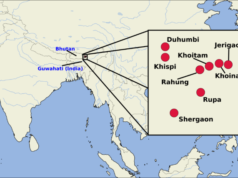This is an iron-oxidizing microbial mat at the Trans-Atlantic Geotraverse hydrothermal vent field collected using a novel, syringe-based sampler deploy from the ROV Jason II.
Credit: Photo taken by the ROV Jason II (courtesy of Woods Hole Oceanographic Institute and the SNAPMORE cruise)
Bacteria that live on iron were found for the first time at three well-known vent sites along the Mid-Atlantic Ridge, one of the longest undersea mountain ranges in the world. Scientists report that these bacteria likely play an important role in deep-ocean iron cycling, and are dominant members of communities near and adjacent to sulfur-rich, black-smoker hydrothermal vents prevalent along the Mid-Atlantic Ridge. These unique chemosynthetic communities live off the chemical components in the vent fluid, rather than sunlight used by their photosynthetic counterparts. This specialized group of iron-oxidizing bacteria, Zetaproteobacteria, appears to be restricted to environments where iron is plentiful, which suggests that these bacteria are highly evolved to utilize iron as an energy source.
Parts of the ocean floor along the Mid-Atlantic Ridge are covered in patches of what looks like yellowish jelly. Scientists recovered some of this yellowish material using a novel, syringe-based sampler deployed by the remotely operated vehicle, Jason. The precision sampler was developed jointly by scientists at Bigelow Laboratory and the Woods Hole Oceanographic Institution, and allows for unprecedented retrieval of delicate microbial mats from miles deep in the ocean. The collected material was found to be composed of millions of Zetaproteobacteria living off the iron. The results were reported in a PLoS ONE article published on March 11th.
“With each expedition to the Mid-Atlantic Ridge we learn more about its complex ecology,” says Jarrod Scott, a postdoctoral researcher at Bigelow Laboratory for Ocean Sciences and lead author of the PLoS One article.
Researchers also conducted a meta-analysis, a review of published literature, to determine locations where Zetaproteobacteria have been observed. They found that Zetaproteobacteria were only detected in samples from iron-rich environments, which suggests these bacteria are highly evolved to utilize iron. Because iron is such a common element in the Earth’s crust, it is possible these bacteria acquired these traits billions of years ago and have evolved to form their own unique lineage within the microbial world.
Find your dream job in the space industry. Check our Space Job Board »
“Zetaproteobacteria do not appear to be common members of water column microbial communities. Yet, if I were to hang an iron bar in the ocean, wait a few days, they would appear there because of an available food source. Finding out where and how they know where food is and relocate to use it, is but one of the many mysteries that remain to be solved, ” adds Scott.
The paper also suggested that iron from vent water near and adjacent to hydrothermal vents (diffuse flow systems) may be an important iron source into the deep ocean. This is important because iron can be an important limiting nutrient in the open ocean.
Scott was joined on the paper by John A. Breier of Woods Hole Oceanographic Institution, George W. Luther III of the University of Delaware, and his Bigelow Laboratory colleague, David Emerson.
Story Source: Materials provided by Bigelow Laboratory for Ocean Sciences. Note: Content may be edited for style and length.
Journal Reference:
Jarrod J. Scott, John A. Breier, George W. Luther, David Emerson.Microbial Iron Mats at the Mid-Atlantic Ridge and Evidence that Zetaproteobacteria May Be Restricted to Iron-Oxidizing Marine Systems. PLOS ONE,2015; 10 (3): e0119284 DOI:10.1371/journal.pone.0119284











